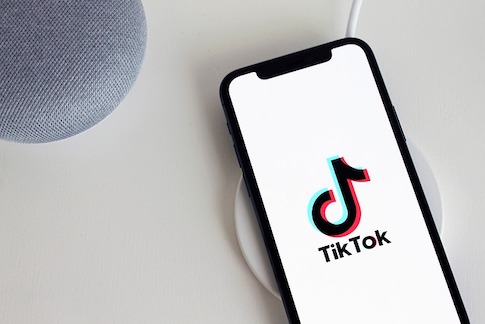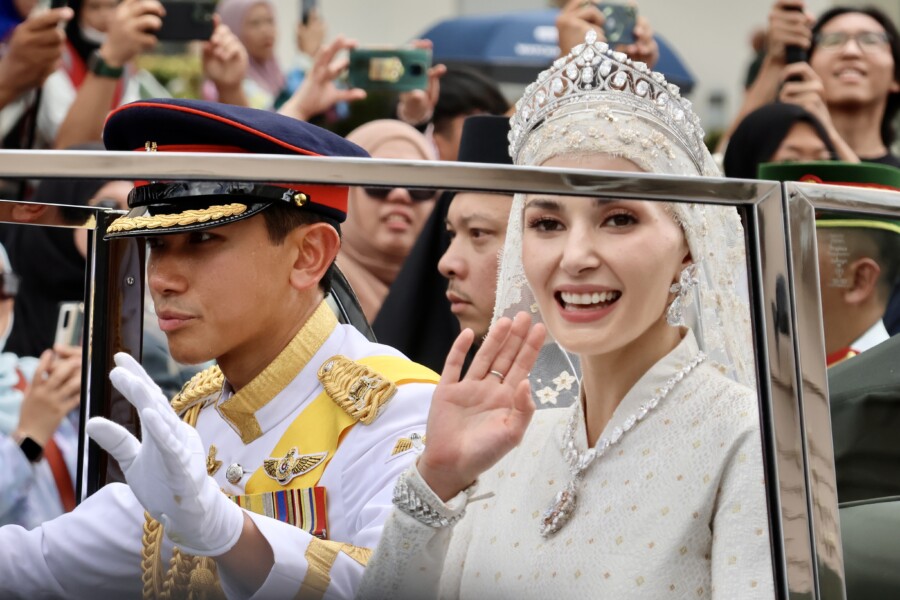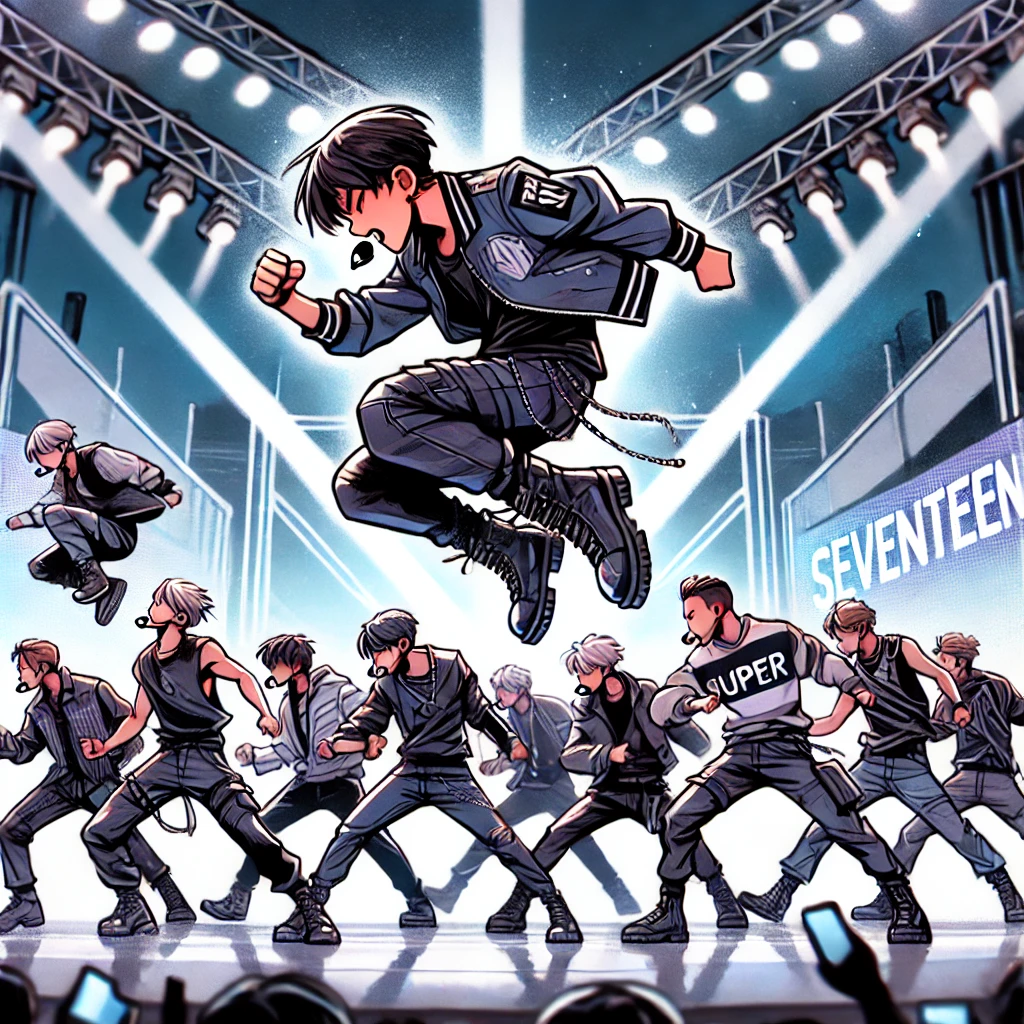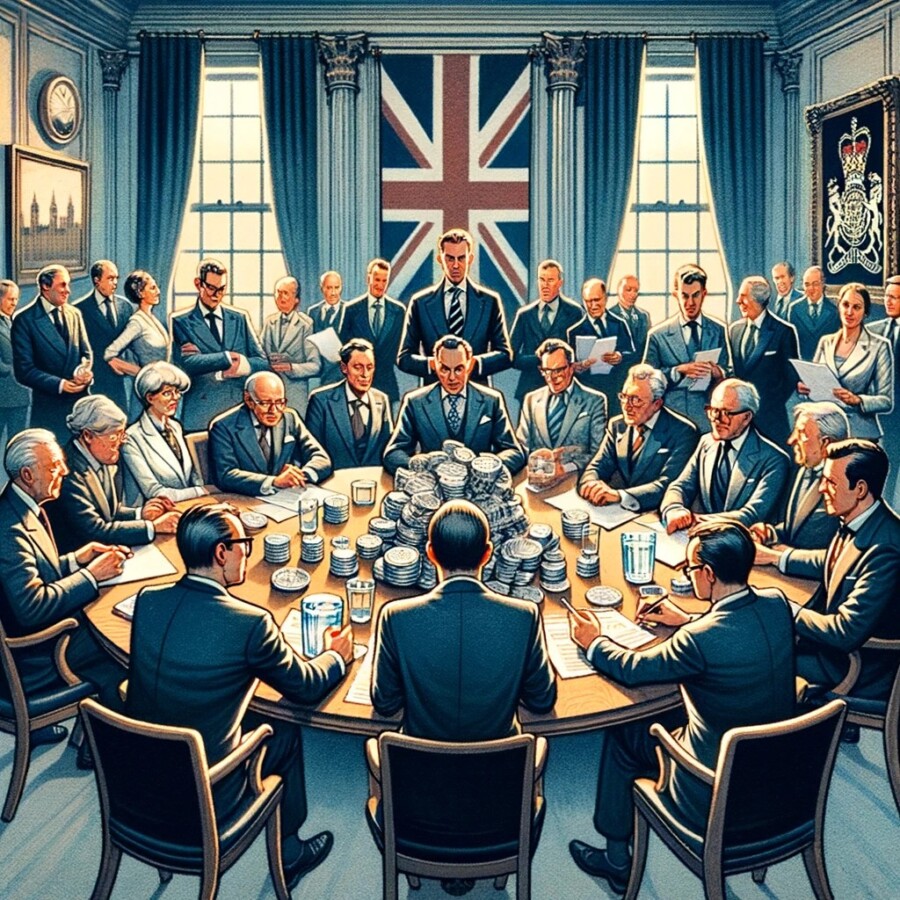Nepal has recently banned the popular app TikTok, citing concerns about its impact on social harmony. This decision comes shortly after the country implemented a new rule requiring social media companies to establish liaison offices within Nepal. TikTok, which boasts around one billion monthly users, has already been banned in several countries, including India. In fact, earlier this year, Montana became the first state in the United States to ban the app, and the UK Parliament has also prohibited its use on its network. Nepal’s Minister for Communications and Information Technology, Rekha Sharma, stated that the platform spreads malicious content and that the ban would be implemented immediately. However, some critics, such as Gagan Thapa, a senior leader of the Nepali Congress, have questioned the government’s decision, suggesting that it infringes on freedom of expression and that efforts should be focused on regulating the platform instead.
TikTok has faced scrutiny from authorities worldwide due to concerns that user data could be shared with the Chinese government. Its parent company, ByteDance, has denied these allegations. TikTok has not responded to the BBC’s request for comment on the recent ban in Nepal. While TikTok may not have as many users as Facebook and Instagram, its popularity among young people surpasses that of its competitors. In Nepal, over the past four years, there have been more than 1,600 cases of cybercrime related to TikTok, according to local media reports. A report by BBC Media Action on media usage in Nepal reveals that TikTok is the third most widely used platform in the country. While YouTube and Facebook are popular among users of all age groups, TikTok is particularly favored by younger individuals, with over 80% of social media users aged between 16 and 24 utilizing the platform. Pakistan has temporarily banned TikTok on at least four occasions since October 2020, and Indonesia recently shut down its TikTok online shopping service.
In conclusion, Nepal has joined the list of countries banning TikTok due to concerns about its impact on social harmony. The government has implemented this ban immediately, citing the spread of malicious content on the platform. However, some critics argue that the ban infringes on freedom of expression and that efforts should be focused on regulating TikTok instead. TikTok has faced scrutiny globally over concerns about data privacy and its ties to the Chinese government. Despite having fewer users than Facebook and Instagram, TikTok is highly popular among young people, particularly those aged between 16 and 24. This ban in Nepal follows similar actions taken by other countries, such as India, the United States, and Indonesia.
Original news source: Nepal bans TikTok citing disruption to social harmony (BBC)
Listen
Slow
Normal
Fast
Group or Classroom Activities
Warm-up Activities:
– Opinion Poll
Instructions: Divide the class into small groups. Each group will create a poll with questions regarding views on social media regulation, freedom of expression, and the impact of platforms like TikTok on society. After formulating the questions, groups will poll other classmates, tally the results, and present their findings to the class.
– News Reporter Role-play
Instructions: Students will pair up and adopt the roles of news anchors reporting on the TikTok ban in Nepal. One student will act as the anchor, and the other as an expert or a government official. They will script and perform a short news segment, discussing the reasons behind the ban, potential impacts on freedom of expression, and reactions from the public and officials.
– Headline Creation
Instructions: Ask students to write down several eye-catching headlines that could be used for an article about the TikTok ban in Nepal. Encourage them to focus on different aspects of the story, such as the impact on youth, data privacy concerns, or the debate on freedom of expression. Afterward, have a class discussion on which headlines are most effective and why.
– Future Predictions
Instructions: Have students form small groups and discuss the potential future implications of the TikTok ban in Nepal and other countries. They should consider how this might affect social media trends, international relations, and digital policy. Each group will share their predictions with the class and provide reasons for their viewpoints.
– Pros and Cons
Instructions: Create two columns on the board, one for ‘Pros’ and one for ‘Cons’. Ask students to come up to the board and write down the advantages and disadvantages of banning TikTok, as seen through the lens of the article. This activity will encourage students to think critically about the issue and consider multiple perspectives. After the board is filled, discuss the points as a class.
Comprehension Questions:
1. What was the primary reason given by Nepal for banning TikTok?
2. What requirement did Nepal recently implement for social media companies?
3. How did the UK Parliament restrict the use of TikTok?
4. What specific allegations have been made against TikTok that have led to scrutiny by authorities worldwide?
5. How has TikTok’s parent company, ByteDance, responded to allegations concerning user data?
6. According to local media reports, how many cases of cybercrime related to TikTok have been reported in Nepal over the past four years?
7. What demographic in Nepal is particularly favored by TikTok?
8. How many times has Pakistan temporarily banned TikTok since October 2020?
Go to answers ⇩
Listen and Fill in the Gaps:
Nepal has recently banned the popular app (1)______, citing concerns about its impact on social harmony. This decision (2)______ shortly after the country implemented a new rule requiring social media companies to establish liaison (3)______ within Nepal. TikTok, which boasts around one billion monthly users, has already been banned in several countries, including India. In fact, earlier this year, Montana became the first state in the United States to ban the app, and the UK Parliament has also (4)______ its use on its network. Nepal’s Minister for Communications and Information Technology, Rekha Sharma, stated that the platform spreads malicious content and that the ban would be implemented immediately. However, some critics, such as (5)______ Thapa, a senior leader of the (6)______ Congress, have (7)______ the government’s decision, suggesting that it infringes on freedom of expression and that efforts should be focused on regulating the platform instead.
TikTok has faced scrutiny from authorities worldwide due to concerns that user data could be shared with the Chinese government. Its parent company, ByteDance, has denied these allegations. TikTok has not responded to the BBC’s request for comment on the (8)______ ban in Nepal. While TikTok may not have as many users as Facebook and Instagram, its popularity among young people surpasses that of its competitors. In Nepal, over the past four years, there have been more than 1,600 cases of cybercrime related to TikTok, according to (9)______ media (10)______. A report by BBC Media Action on media usage in Nepal reveals that TikTok is the third most widely used platform in the country. While YouTube and Facebook are popular among users of all age groups, TikTok is particularly favored by younger individuals, with over 80% of social media users aged between 16 and 24 utilizing the platform. Pakistan has temporarily banned TikTok on at least four occasions since October 2020, and Indonesia recently shut down its TikTok (11)______ shopping service.
In conclusion, Nepal has (12)______ the list of countries banning TikTok due to concerns about its (13)______ on social harmony. The government has implemented this ban immediately, citing the spread of malicious (14)______ on the platform. However, some critics argue that the ban infringes on freedom of expression and that efforts should be focused on regulating TikTok instead. TikTok has faced scrutiny globally over concerns about data privacy and its ties to the Chinese government. Despite (15)______ fewer users than Facebook and Instagram, TikTok is highly popular among young people, particularly those aged between 16 and 24. This ban in Nepal follows similar actions taken by other countries, such as (16)______, the United States, and Indonesia.
Go to answers ⇩
Discussion Questions:
Students can ask a partner these questions, or discuss them as a group.
1. What is your opinion on the effectiveness of banning social media apps like TikTok in promoting social harmony?
2. How would you feel if your own country decided to ban a popular app like TikTok?
3. Do you think banning social media apps infringes on freedom of expression, or is it a necessary measure for public safety?
4. Have you or someone you know ever encountered malicious content on TikTok, and how was it dealt with?
5. In what ways do you believe social media platforms could be regulated without imposing outright bans?
6. What is your stance on the argument that user data from apps like TikTok could be shared with governments?
7. How important do you think it is for social media companies to establish liaison offices in the countries where they operate?
8. Do you like the idea of social media platforms being closely monitored by local authorities? Why or why not?
9. Do you think the popularity of an app among young people, like TikTok’s popularity among those aged 16 to 24, should influence a government’s decision to ban it?
10. Have you ever experienced or witnessed cybercrime associated with social media usage, and if so, what measures did you take?
11. How do you think the ban on TikTok in Nepal might affect the digital landscape and content creation in the country?
12. Do you believe that the potential risks of using TikTok outweigh its benefits as a platform for creativity and expression?
13. Considering the bans in various countries, do you think TikTok should make changes to its policies or operations to address global concerns?
14. What is your perspective on the role of social media in shaping public opinion and societal norms?
15. Do you think other countries should follow Nepal’s example in banning TikTok, or should they adopt a different approach?
Individual Activities
Vocabulary Meanings:
Match each word to its meaning.
Words:
1. TikTok
2. ban
3. Nepal
4. social media
5. malicious content
6. freedom of expression
7. regulation
8. young people
Meanings:
(a) Demographic group of individuals in a certain age range
(b) Country that has implemented a ban on TikTok
(c) Control or supervision of something
(d) Harmful or harmful content
(e) Right to express oneself freely
(f) Platforms for online communication and networking
(g) Popular app recently banned in Nepal
(h) Prohibition or restriction on something
Go to answers ⇩
Multiple Choice Questions:
1. Why did Nepal ban TikTok?
(a) Concerns about data privacy
(b) Lack of regulation on the platform
(c) Pressure from the Chinese government
(d) Concerns about its impact on social harmony
2. How many monthly users does TikTok have?
(a) Around one billion
(b) More than Facebook and Instagram
(c) Less than 1,600
(d) None of the above
3. Which state was the first to ban TikTok in the United States?
(a) California
(b) Montana
(c) New York
(d) Texas
4. What is the main concern about TikTok’s user data?
(a) It could be sold to other social media companies
(b) It could be used for targeted advertising
(c) It could be shared with the Chinese government
(d) It could be hacked by cybercriminals
5. What is the third most widely used platform in Nepal?
(a) TikTok
(b) YouTube
(c) Facebook
(d) Instagram
6. Who has questioned the government’s decision to ban TikTok in Nepal?
(a) Rekha Sharma
(b) The Chinese government
(c) The UK Parliament
(d) Gagan Thapa
7. Which age group is TikTok particularly favored by?
(a) 25-34 year olds
(b) 35-44 year olds
(c) 16-24 year olds
(d) 45+ year olds
8. How many times has Pakistan temporarily banned TikTok?
(a) Once
(b) At least four occasions since October 2020
(c) Twice
(d) Three times
True or False Questions:
1. The ban on TikTok in Nepal is not due to concerns about its impact on social harmony.
2. Nepal implemented a new rule requiring social media companies to establish liaison offices within the country.
3. TikTok has already been banned in several countries, including India and the United States.
4. Some critics argue that the ban on TikTok in Nepal does not infringe on freedom of expression.
5. TikTok has faced scrutiny over concerns that user data could be shared with the Chinese government.
6. Nepal has not recently banned the app TikTok.
7. TikTok is not particularly popular among young people, with less than 80% of social media users aged between 16 and 24 utilizing the platform.
8. Nepal’s Minister for Communications and Information Technology stated that TikTok spreads malicious content.
Go to answers ⇩
Write a Summary:
Write a summary of this news article in two sentences.
Writing Questions:
Answer the following questions. Write as much as you can for each answer.
1. What reasons did Nepal’s Minister for Communications and Information Technology give for banning TikTok?
2. How has TikTok responded to the ban imposed by Nepal, according to the article?
3. What demographic in Nepal is most affected by the TikTok ban, based on the article’s information?
4. Can you list some other countries that have imposed bans or restrictions on TikTok?
5. What are the concerns raised by critics regarding the TikTok ban in Nepal?
Answers
Comprehension Question Answers:
1. What was the primary reason given by Nepal for banning TikTok?
The primary reason given by Nepal for banning TikTok was the concern about its impact on social harmony and the spread of malicious content on the platform.
2. What requirement did Nepal recently implement for social media companies?
Nepal recently implemented a new rule requiring social media companies to establish liaison offices within the country.
3. How did the UK Parliament restrict the use of TikTok?
The UK Parliament prohibited the use of TikTok on its network.
4. What specific allegations have been made against TikTok that have led to scrutiny by authorities worldwide?
The specific allegations made against TikTok are concerns that user data could be shared with the Chinese government.
5. How has TikTok’s parent company, ByteDance, responded to allegations concerning user data?
TikTok’s parent company, ByteDance, has denied the allegations concerning user data sharing with the Chinese government.
6. According to local media reports, how many cases of cybercrime related to TikTok have been reported in Nepal over the past four years?
According to local media reports, there have been more than 1,600 cases of cybercrime related to TikTok in Nepal over the past four years.
7. What demographic in Nepal is particularly favored by TikTok?
TikTok is particularly favored by younger individuals in Nepal, with over 80% of social media users aged between 16 and 24 utilizing the platform.
8. How many times has Pakistan temporarily banned TikTok since October 2020?
Pakistan has temporarily banned TikTok on at least four occasions since October 2020.
Go back to questions ⇧
Listen and Fill in the Gaps Answers:
(1) TikTok
(2) comes
(3) offices
(4) prohibited
(5) Gagan
(6) Nepali
(7) questioned
(8) recent
(9) local
(10) reports
(11) online
(12) joined
(13) impact
(14) content
(15) having
(16) India
Go back to questions ⇧
Vocabulary Meanings Answers:
1. TikTok
Answer: (g) Popular app recently banned in Nepal
2. ban
Answer: (h) Prohibition or restriction on something
3. Nepal
Answer: (b) Country that has implemented a ban on TikTok
4. social media
Answer: (f) Platforms for online communication and networking
5. malicious content
Answer: (d) Harmful or harmful content
6. freedom of expression
Answer: (e) Right to express oneself freely
7. regulation
Answer: (c) Control or supervision of something
8. young people
Answer: (a) Demographic group of individuals in a certain age range
Go back to questions ⇧
Multiple Choice Answers:
1. Why did Nepal ban TikTok?
Answer: (d) Concerns about its impact on social harmony
2. How many monthly users does TikTok have?
Answer: (a) Around one billion
3. Which state was the first to ban TikTok in the United States?
Answer: (b) Montana
4. What is the main concern about TikTok’s user data?
Answer: (c) It could be shared with the Chinese government
5. What is the third most widely used platform in Nepal?
Answer: (a) TikTok
6. Who has questioned the government’s decision to ban TikTok in Nepal?
Answer: (d) Gagan Thapa
7. Which age group is TikTok particularly favored by?
Answer: (c) 16-24 year olds
8. How many times has Pakistan temporarily banned TikTok?
Answer: (b) At least four occasions since October 2020
Go back to questions ⇧
True or False Answers:
1. The ban on TikTok in Nepal is not due to concerns about its impact on social harmony. (Answer: False)
2. Nepal implemented a new rule requiring social media companies to establish liaison offices within the country. (Answer: True)
3. TikTok has already been banned in several countries, including India and the United States. (Answer: True)
4. Some critics argue that the ban on TikTok in Nepal does not infringe on freedom of expression. (Answer: False)
5. TikTok has faced scrutiny over concerns that user data could be shared with the Chinese government. (Answer: True)
6. Nepal has not recently banned the app TikTok. (Answer: False)
7. TikTok is not particularly popular among young people, with less than 80% of social media users aged between 16 and 24 utilizing the platform. (Answer: False)
8. Nepal’s Minister for Communications and Information Technology stated that TikTok spreads malicious content. (Answer: True)
Go back to questions ⇧













